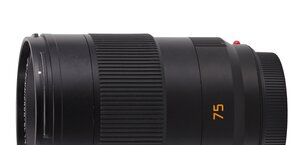Samyang T-S 24 mm f/3.5 ED AS UMC
5. Chromatic aberration
 |
It’s nice to see such results as those of the lateral aberration as well. The values we got on the edge of the APS-C/DX sensor and full frame are presented on a graph below.
Please Support UsIf you enjoy our reviews and articles, and you want us to continue our work please, support our website by donating through PayPal. The funds are going to be used for paying our editorial team, renting servers, and equipping our testing studio; only that way we will be able to continue providing you interesting content for free. |
- - - - - - - - - - - - - - - - - - - - - - - - - - - - - - - - - - - - - - - - - - - - - - - -

On the edge of full frame the chromatic aberration is practically imperceptible and on the edge of the smaller sensor it remains low. As you see this aberration shouldn’t bother you at all and the crops below confirm that.
 |
Of course you might start wondering how the chromatic aberration value and layout changes when you shift the lens; the fact that it must change is beyond discussion. Let’s check now what results you get when you shift the axis as far to the left as possible.

In this case the optical axis of the system is aimed at somewhere between the left edge of full frame and the APS-C/DX sensor; that’s why the lateral chromatic aberration is the lowest here. On the left side of full frame it is practically zero and on the left edge of the APS-C/DX - negligible
The values we got on the other side of the frame are, for obvious reasons, higher but you have to admit there are still no reasons to complain: values ranging from 0.08 to 0.10% constitute a borderline between a low and medium level. Taking into account the configuration of the lens it is certainly a praiseworthy result.
 |
This time we didn’t test spherical aberration – with such parameters the lens provides such a large depth of field that it would be difficult to get light circles big enough to examine both sides of the focus.






